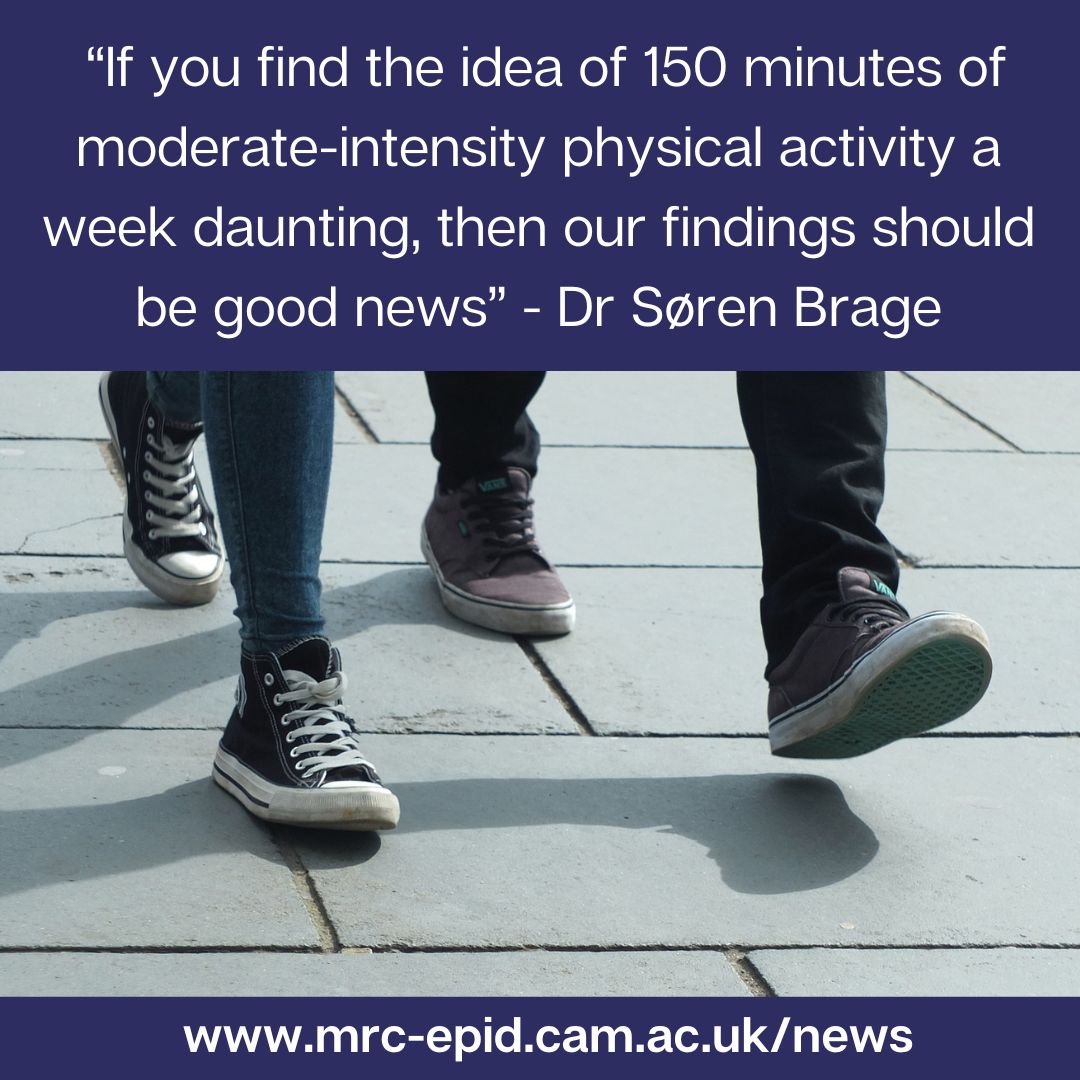Analysis of data from >30 million people finds that one in ten early deaths could be prevented if everyone managed at least half the @NHSuk recommended level of physical activity.
Dr Leandro Garcia and colleagues report today in @BJSM_BMJ.
doi.org/10.1136/bjspor…
🧵(1/8)
Dr Leandro Garcia and colleagues report today in @BJSM_BMJ.
doi.org/10.1136/bjspor…
🧵(1/8)

@NHSuk @BJSM_BMJ @SorenBrage @The_MRC @tessastraining @Cambridge_Uni @CamBioCampus @PA_Researcher @LGAWellbeing @SedBehaviourRN Physical activity reduces the risk of #heartdisease & #cancer.
#NHS recommend adults do at least 150 minutes moderate-intensity activity - e.g. brisk walking or slow cycling - or 75 minutes vigorous-intensity activity – e.g. running, swimming or fast cycling - a week.
(2/8)
#NHS recommend adults do at least 150 minutes moderate-intensity activity - e.g. brisk walking or slow cycling - or 75 minutes vigorous-intensity activity – e.g. running, swimming or fast cycling - a week.
(2/8)
To examine how differing levels of physical activity alter the risk of heart disease, cancer and premature death, the researchers looked at data from 94 large cohort studies, totaling more than 30 million participants.
mrc-epid.cam.ac.uk/blog/2023/03/0…
(3/8)
mrc-epid.cam.ac.uk/blog/2023/03/0…
(3/8)
They found that outside of work-related physical activity, two out of three people reported activity levels below 150 min per week of moderate-intensity activity, and fewer than one in ten managed more than 300 min per week.
(4/n)
(4/n)

For those doing >150 min per week of moderate-intensity activity, additional benefits in terms of reduced risk of disease or early death were marginal.
But even half this amount had real benefits. Just 75 min per week brought a 23% lower risk of early death.
(5/8)
But even half this amount had real benefits. Just 75 min per week brought a 23% lower risk of early death.
(5/8)

They calculate that if all participants did at least 150 min per week of moderate-intensity activity, around one in six early deaths would be prevented.
But even managing 75 min per week, one in ten early deaths could be prevented.
(6/8)
But even managing 75 min per week, one in ten early deaths could be prevented.
(6/8)

What counts as moderate-intensity physical activity?
Moderate-intensity physical activity raises your heart rate and makes you breathe faster, but you would still be able to speak during the activity. Examples include:
•Brisk walking
•Dancing
•Riding a bike
•Tennis
(7/8)



Moderate-intensity physical activity raises your heart rate and makes you breathe faster, but you would still be able to speak during the activity. Examples include:
•Brisk walking
•Dancing
•Riding a bike
•Tennis
(7/8)




Read the @BJSM_BMJ paper by Dr Leandro Garcia et al.
Non-occupational physical activity and risk of cardiovascular disease, cancer, and mortality outcomes: a dose response meta-analysis of large prospective studies.
doi.org/10.1136/bjspor…
(8/8)
Non-occupational physical activity and risk of cardiovascular disease, cancer, and mortality outcomes: a dose response meta-analysis of large prospective studies.
doi.org/10.1136/bjspor…
(8/8)
• • •
Missing some Tweet in this thread? You can try to
force a refresh







